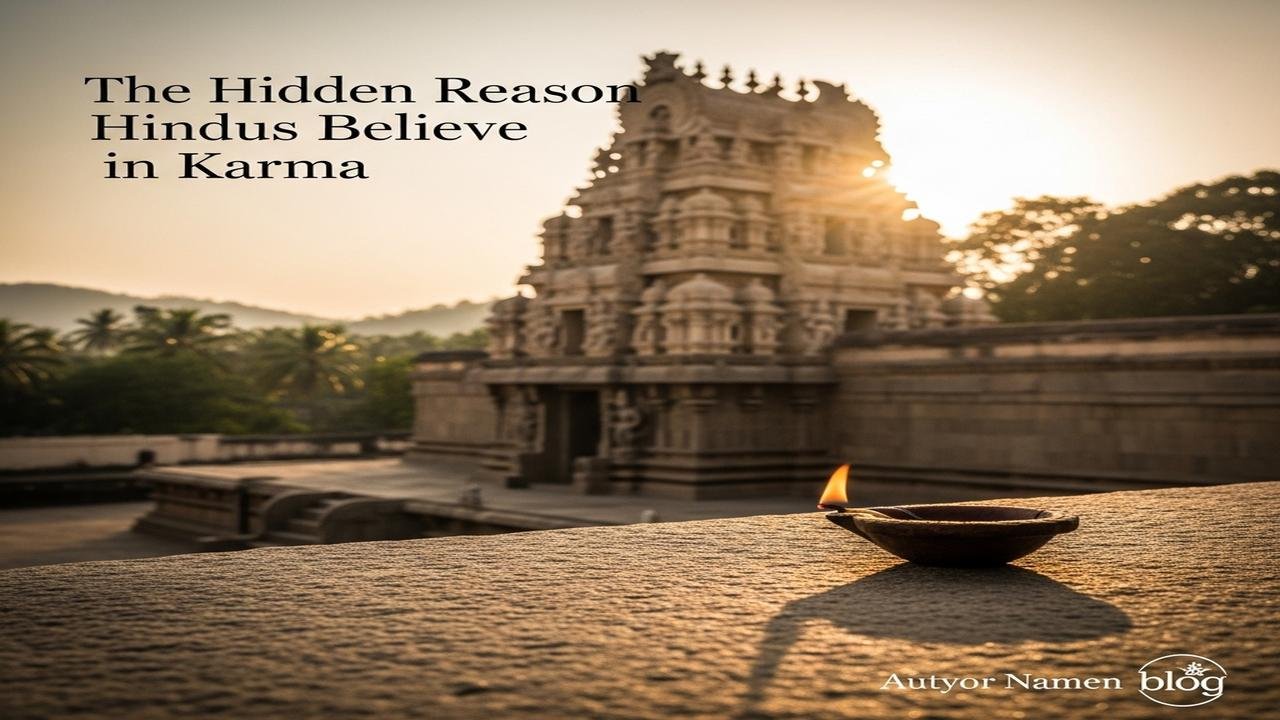The Hidden Reason Hindus Believe in Karma

Why do Hindus believe in karma?
On a quiet evening in a village near the Ganges, an old woman once told me a simple story. She said life is like planting a seed: what you sow, you will one day harvest. That gentle image captures why the idea of karma holds a special place in the heart of Hindu life.
Karma, in its simplest sense, means action and consequence. Yet for Hindus it is more than a rule of cause and effect. It is a living teaching found in ancient texts—the Vedas, the Upanishads, and the Bhagavad Gita—which gently guide people to live with responsibility, compassion, and awareness. These scriptures explain that actions shape our present and future, not as punishment, but as lessons that help the soul grow.
Imagine a traveler on a long journey. Each step is a choice—kindness, anger, service, or neglect. These choices leave impressions on the heart and mind, shaping future choices and experiences. This web of actions and impressions is what Hindus call karma. It connects with another central idea, samsara, the cycle of birth and rebirth. Karma influences where the traveler will walk next, offering chances to learn and evolve through many lives.
But karma is not cold or mechanical. In Hindu thinking, it is infused with moral meaning and hope. A good deed creates what is called punya (merit); a harmful deed creates debt. Yet while debts can bring difficulties, they also motivate understanding and transformation. This is why rituals, prayers, and acts of service are treasured—they help purify the heart and accumulate positive seeds.
Many traditions and practices in daily Hindu life express faith in karma. Families perform simple rituals at home, offer food to elders, visit temples, and share charity. Festivals brighten this belief with communal acts: during Diwali, lights are lit to honor truth and goodness; during Pitru Paksha, offerings are made to ancestors as a way to care for past bonds. Pilgrimages to rivers and temples are not only about seeking blessings, but also about renewing vows to live rightly.
There is also the beautiful teaching of karma yoga in the Bhagavad Gita—selfless action. This path asks us to act without clutching the results, offering our work as an offering. In daily life, it looks like helping someone without seeking praise, doing duty without selfishness. Such living softens the ego and creates peace, proving that karma is as much about intention as it is about outcome.
Symbolism helps make this idea personal. The river is a common image: actions are like drops joining a greater flow that carries us forward. The balance between seeds and fruit reminds us that every small kindness counts. These symbols make karma understandable to children and elders alike.
In the modern world, belief in karma encourages ethical choices, social responsibility, and inner reflection. It asks people to consider long-term effects of technology, relationships, and speech. When a community lives by these principles—respect, duty, compassion—it becomes a living temple where traditions and values support each person’s growth.
Practical ways Hindus honor the law of karma:
- Daily prayer and meditation to steady the mind.
- Seva (service) at temples or in the community.
- Charity and sharing food with those in need.
- Performing rituals and remembering ancestors with humility.
- Living according to one’s duty (dharma) with sincerity.
Ultimately, Hindus believe in karma because it explains life with both justice and mercy. It invites each person to learn, heal, and grow—step by step—toward wisdom and love.
Conclusion: As the old woman said, every seed we plant matters. Let our actions be kind seeds that one day bloom into peace for ourselves and for the whole world.
